
Merneferre Ay was an ancient Egyptian pharaoh of the mid 13th Dynasty. The longest reigning pharaoh of the 13th Dynasty, he ruled a likely fragmented Egypt for over 23 years in the early to mid 17th century BC. A pyramidion bearing his name shows that he possibly completed a pyramid, probably located in the necropolis of Memphis.
In ancient Egyptian history, dynasties are series of rulers sharing a common origin. They are usually, but not always, traditionally divided into 33 pharaonic dynasties; these dynasties are commonly grouped by modern scholars into "kingdoms" and "intermediate periods".

Mentuhotep I may have been a Theban nomarch and independent ruler of Upper Egypt during the early First Intermediate Period. Alternatively, Mentuhotep I may be a fictional figure created during the later Eleventh Dynasty, which rose to prominence under Intef II and Mentuhotep II, playing the role of a founding father.

The Ninth Dynasty of ancient Egypt is often combined with the 7th, 8th, 10th and early 11th Dynasties under the group title First Intermediate Period. The dynasty that seems to have supplanted the Eighth Dynasty is extremely obscure. The takeover by the rulers of Herakleopolis was violent and is reflected in Manetho's description of Achthoes, the founder of the dynasty, as 'more terrible than his predecessors', who 'wrought evil things for those in all Egypt".
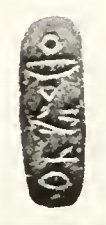
Nebmaatre is the prenomen of a poorly attested ruler of the late Second Intermediate Period of Ancient Egypt. Nebmaatre may have been a member of the early 17th Dynasty and as such would have reigned over the Theban region. Alternatively, Jürgen von Beckerath believes that Nebmaatre was a ruler of the late 16th Dynasty.
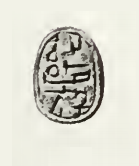
'Ammu Aahotepre was a pharaoh of the 14th Dynasty who ruled over parts of Egypt during the Second Intermediate Period. His reign is believed to have lasted about 15 years, from 1760 BC until 1745 BC.

Maaibre Sheshi was a ruler of areas of Egypt during the Second Intermediate Period. The dynasty, chronological position, duration and extent of his reign are uncertain and subject to ongoing debate. The difficulty of identification is mirrored by problems in determining events from the end of the Middle Kingdom to the arrival of the Hyksos in Egypt. Nonetheless, Sheshi is, in terms of the number of artifacts attributed to him, the best-attested king of the period spanning the end of the Middle Kingdom and the Second Intermediate period; roughly from c. 1800 BC until 1550 BC. Hundreds of scaraboid seals bearing his name have been found throughout the Levant, Egypt, Nubia, and as far away as Carthage, where some were still in use 1,500 years after his death.

Neferirkare Pepi III was an ancient Egyptian king of the Eighth Dynasty during the early First Intermediate Period. According to the egyptologists Kim Ryholt, Jürgen Beckerath, and Darrell Baker, he was the 17th and final king of the Eighth Dynasty. Many scholars consider Neferirkare to have been the last king of the Old Kingdom, which came to an end with the 8th Dynasty.
The Eloquent Peasant is an Ancient Egyptian story that was composed around 1850 BCE during the time of the Middle Kingdom in Egypt. It is one of the longest Egyptian tales that has survived completed. The tale is about a peasant, Khun-Anup, who stumbles upon the property of the high steward, the noble Rensi son of Meru, guarded by its harsh overseer, Nemtynakht. It is set in the Ninth or Tenth Dynasty around Herakleopolis. This tale is described as an elaborate reflection on the connection – or disconnection – of ethical order and refined speech, as transliterated into refined writing.

Wahkare Khety was an ancient Egyptian pharaoh of the 9th or 10th Dynasty during the First Intermediate Period.
Setut or Senen... was a king of the 9th Dynasty of ancient Egypt, during the First Intermediate Period.

Meryibre Khety, also known by his Horus name Meryibtawy, was a pharaoh of the 9th or 10th Dynasty of Egypt, during the First Intermediate Period.
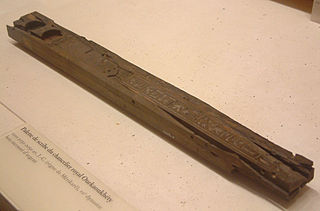
Merikare was an ancient Egyptian pharaoh of the 10th Dynasty who lived toward the end of the First Intermediate Period.
Purportedly inspired by the teaching of his father, he embarked on a semi-peaceful coexistence policy with his southern rivals of the 11th Dynasty, focusing on improving the prosperity of his realm centered on Herakleopolis instead of waging an open war with Thebes. His policy was not rewarded, and shortly after his death his kingdom was conquered by the Theban Mentuhotep II, marking the beginning of the Middle Kingdom. The existence of his pyramid has historically been ascertained, although it has not yet been discovered.

Djedneferre Dedumose II was a native ancient Egyptian pharaoh during the Second Intermediate Period. According to egyptologists Kim Ryholt and Darrell Baker, he was a ruler of the Theban 16th Dynasty. Alternatively, Jürgen von Beckerath, Thomas Schneider and Detlef Franke see him as a king of the 13th Dynasty.
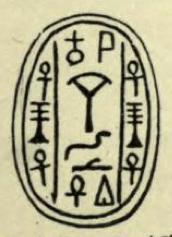
Wazad was an Egyptian pharaoh during the Second Intermediate Period. According to the Egyptologists Kim Ryholt and Darrell Baker, Wazad was a member of the 14th Dynasty of Egypt reigning c. 1700 BC. As a king of the 14th Dynasty, he would have reigned from Avaris over the eastern Nile Delta and possibly over the western Delta as well. The Memphis-based 13th Dynasty reigned over Middle and Upper Egypt at the same time. Alternatively, according to Jürgen von Beckerath and Wolfgang Helck, Wazad was a ruler of the 16th Dynasty and a vassal of the Hyksos 15th Dynasty. This view is debated in Egyptology, in particular because Ryholt and others have argued that the 16th Dynasty was an independent Theban kingdom rather than a vassal dynasty of the Hyksos.

Sekhemrekhutawy Khabaw was an Egyptian pharaoh of the early 13th Dynasty during the Second Intermediate Period.

Khety II was an ancient Egyptian nomarch of the 13th nomos of Upper Egypt during the reign of pharaoh Merykare of the 10th Dynasty.
Wadjkare was an ancient Egyptian pharaoh of the Eighth dynasty who reigned c. 2150 BC during the First Intermediate Period. He is considered to be a very obscure figure in Egyptian history.
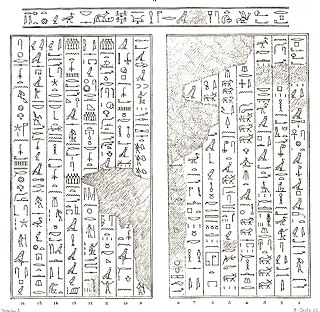
Tefibi was an ancient Egyptian nomarch of the 13th nomos of Upper Egypt during the 10th Dynasty. In addition, he also was hereditary prince, count, wearer of the royal seal, sole companion and high priest of Wepwawet. The main source about his life came from his biography, inscribed on the "tomb III" in Asyut.

Merkheperre was an Egyptian pharaoh of the late 13th Dynasty of Egypt during the Second Intermediate Period reigning some time between 1663 BC and 1649 BC. As such, Merkheperre would have reigned either over Upper Egypt from Thebes or over Middle and Upper Egypt from Memphis. At the time, the Eastern Nile Delta was under the domination of the 14th Dynasty.
















